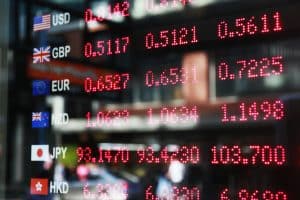 Foreign exchange (FX) market participants have been warned that a failure of industry-wide adoption of the Global Code of Conduct could lead to further regulation.
Foreign exchange (FX) market participants have been warned that a failure of industry-wide adoption of the Global Code of Conduct could lead to further regulation.
A panel of speakers at TradeTech FX in Barcelona, who have been heavily involved in the establishment and development of the Global Code, told delegates that adherence is imperative despite how little or how many of the Principles apply to individual firms.
“The process of adhering to the Code will be different for each market participant,” said Adrian Boehler co-head of FXLM and commodity derivatives at BNP Paribas, and member of the Market Participants Group that has been working alongside a number of central banks globally on the FX Global Code.
“Despite the number of Principles that apply, everyone is an important a part of the ecosystem and has to play a role in mending trust in the industry. It is a privilege that we can sign up voluntarily, but if the pace of adoption is not quick enough, then we need to contemplate a future where we are regulated as an industry.”
The panel also explained that buy-side adoption of the Global FX Code has been slower than anticipated because the commercial benefit to the sell-side is more obvious. However, the commercial benefits to the buy-side are increasing due to the legitimacy of operation for end clients.
“Our priority for the future of the Code is the expand the buy-side outreach,” added Roswitha Hutter, secretary of the foreign exchange contact group at the European Central Bank. “The idea here is to lower the bar of adoption for the buy-side and identify the challenges and motivations for those that have already signed up – it’s a call for volunteers in raising awareness.”
The panel also heralded a recent report by NEX Group which outlined the benefits to execution and affects on the ‘last look’ method since the Global Code was established one year ago. The report analysed activity on its bilateral EBS Direct trading platform and found a significant reduction in hold times, reject rates and a tightening of spreads since the introduction of the Global Code.
“There has been a lively and constructive discussion particularly around ‘last look’, but we could not come up with the language around that which satisfied all market participants. We settled with less granularity than some market participants would have liked, but all are happy with the direction the Global FX Code is evolving,” Boehler added.
Last look practices provide the opportunity for banks to decline or reject a trade when the market has moved against its position, and has proved to be a point of contention with FX.
“We are already starting to see the positive changes of things since the FX Code was launched a year ago, but we also see that are some grey areas that we need to work on,” Stephane Malrait, chair of the FX Committee at ACI, concluded.